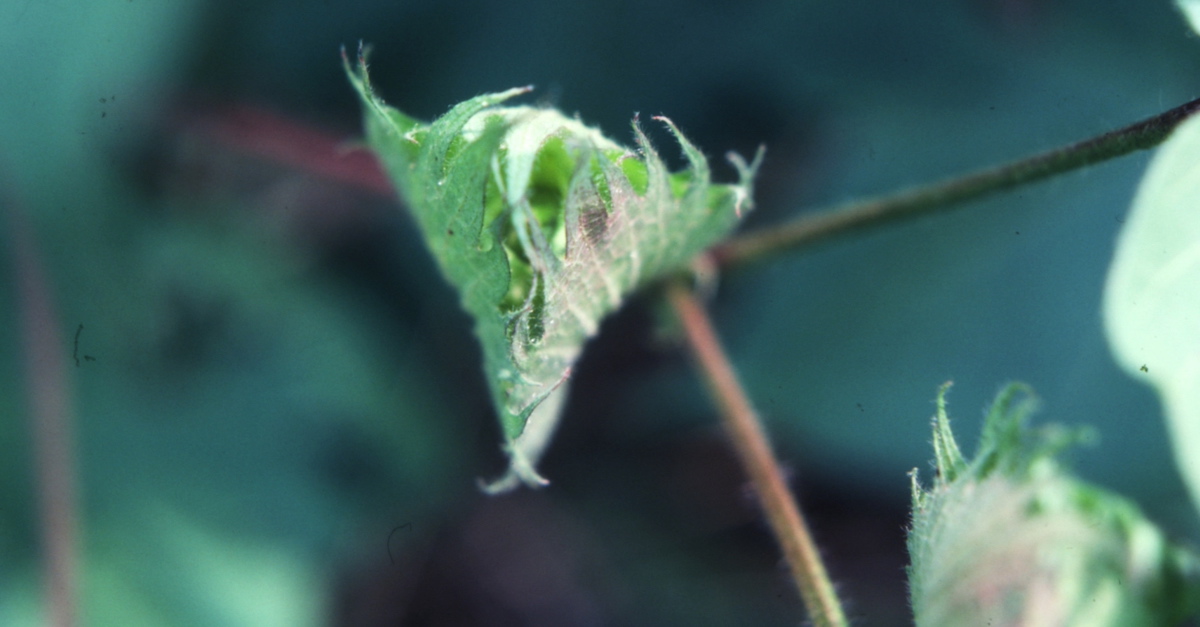NC State: Managing Weeds Following the Dicamba Ruling
Hopefully you had the opportunity to purchase your dicamba products prior to reading this blog. If not, you may be wondering, “What can I spray on my dicamba soybeans or cotton to control my Palmer amaranth, common ragweed or other troublesome weeds?”.
In most areas, we can still control glyphosate-resistant weeds with conventional herbicides in soybean, however there are some areas of the state with both ALS- and PPO-resistance. If you are in an area with confirmed or suspected resistance to ALS- and PPO-inhibitors and you do not have approved dicamba products prior to planting Xtend soybeans, you may want to consider switching varieties to those containing Enlist or Liberty Link traits. If you have planted Xtend soybeans or cotton, your options follow.
First, a reminder and a call to reason. Only dicamba formulated as XtendiMax, Engenia, FeXapan or Tavium may be applied over the top of Xtend soybeans and cotton. You can do so until July 31 if you currently have the product. If you do not currently have approved dicamba products, don’t panic and – for God’s sake – DO NOT APPLY ANY OTHER FORMULATION! We have options. Using products off label will only increase the chance for off target issues and shine a negative light on us.
Soybean Weed Management without Dicamba:
Now about controlling those weeds if you planted Xtend soybeans, but do not have dicamba. Xtend soybeans are tolerant to glyphosate and dicamba. We can still effectively use glyphosate to control grasses, sicklepod, sedges and cocklebur, to name a few of our challenging weeds. To control glyphosate-resistant species such as Palmer amaranth and common ragweed, use the following approaches:
- Palmer amaranth. Start with a strong residual program with Group 14 (PPO-inhibitors) and Group 15 (chloroacetamides) herbicides. This should be common practice by now for all soybeans but will be critical to stay ahead of Palmer amaranth. Metribuzin (Group 5) is also an option PRE, but follow precautionary guidelines to avoid soybean injury. Most Palmer amaranth is resistant to ALS-inhibitors across the state, so we will have to rely on PPO-inhibitors such as Cobra, Flexstar, Reflex, Resource or Ultra Blazer for POST control before weeds reach 4 inches in height. Add in an overlapping residual product (Group 15) to control subsequent flushes. Be prepared to follow a up with a second POST if needed.
- Common ragweed. There are pockets of common ragweed in North Carolina resistant to ALS-inhibitors, and a small pocket in the Northeast resistant to PPO-inhibitors that need special attention. Outside these areas, we can use a Valor or Sharpen-based herbicide (PPO-inhibitor) or metribuzin (Group 5) PRE to start clean. Once soybeans have emerged, use herbicides in Group 2 (ALS-inhibitors) and Group 14 (PPO-inhibitors) to control emerged common ragweed. Effective Group 2 herbicides include Classic, FirstRate and Synchrony. Most PPO-inhibitors provide good to excellent control of common ragweed. Alternate modes of action if multiple POST applications are made during the season.
Cotton Weed Management with Limited or No Dicamba:
I had to contain my frustration a few days ago. A cotton producer made the decision earlier in the year to abandon PRE herbicides with the intention of spraying dicamba twice across his entire crop. This is reminiscent of what happened when the Roundup Ready technology first launched and exactly why glyphosate-resistant weeds prevailed. Residual herbicides applied preplant burndown, PRE, POST, and POST-Directed are critical to successful cotton weed management and, more importantly, avoiding resistance to our POST herbicides (dicamba products, Enlist products and Liberty).
Enough of the soapbox, back to weed control. First off, weed management in Enlist cotton (2,4-D choline-tolerant) remains unaffected and should continue as previously planned. Thankfully, XtendFlex cotton is tolerant to Liberty. In situations where farmers do not have access to dicamba products and have glyphosate- and ALS-resistant Palmer amaranth or common ragweed, Liberty would be in order. I will remind you, Liberty is not as forgiving as the auxin herbicides with regard to weed size.
Timeliness will ultimately determine success or failure of Liberty to control Palmer amaranth and common ragweed. When Palmer amaranth or common ragweed are large (> 4 inches), two applications of Liberty are often necessary. The interval between sequential applications of Liberty becomes more critical as Palmer amaranth and common ragweed size increases. Where Palmer amaranth and common ragweed get out of hand, sequential applications of Liberty should be separated by 10 days.
If enough dicamba is on hand to make one application, sequential applications of dicamba and Liberty work well. In my experience, order of application has not mattered when Palmer amaranth was < 4 inches tall. If dealing with > 4 inch Palmer amaranth, apply dicamba first and follow with Liberty 10 days later.
Regardless of your dicamba stock, it would be wise to include a Group 15 (Dual Magnum, Outlook, or Warrant) with POST herbicides for residual control of Palmer amaranth and to lessen pressure on future Liberty or dicamba applications.
Lastly, 2020 would be a good year to dust off the hooded sprayer or layby rig. Roundup + Direx applied POST-directed would be appropriate for most acres with a history of Palmer amaranth and emerged grasses at the time of application.
Consider Your Options
In summary, we have options. If you have not planted, make sure you have the herbicides needed for the season, consider your known weed challenges and consider changing traits where necessary. If you have planted, purchase alternative herbicides early in case others are in the same situation. If you run into issues or have questions, reach out to your County Extension agent.









